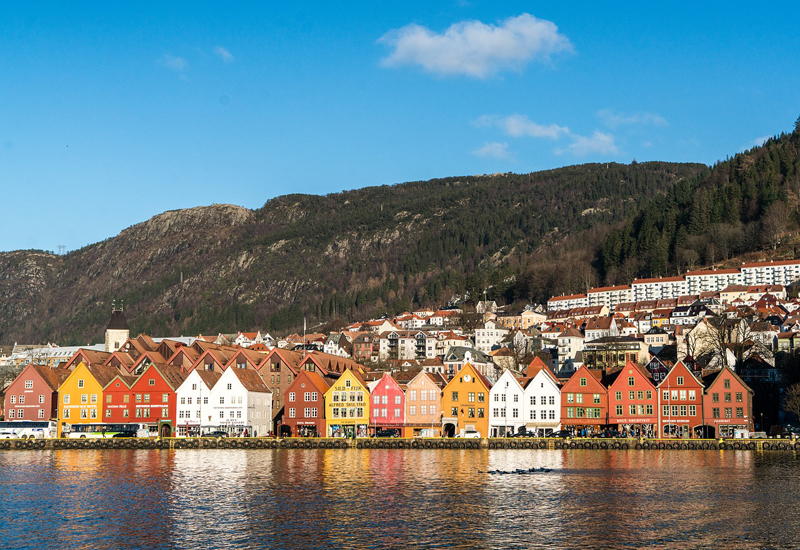The Hanseatic League (German: die Hanse) was an alliance of cities, mostly de facto independent city states in central and northern Europe, in the medieval and early modern era. Most of those cities are situated at or close to the Baltic Sea, but trade contacts were also established to the North Sea and far inland. The Hanseatic League originated in the High Middle Ages as an association of low German merchants who lived, worked and traded in several cities mostly along the Baltic Coast. By the Late Middle Ages the cities themselves had taken over the administration of the Hanse and it can be said that cities were “members of the Hanse” during that time. However, distinguishing between a league of people as opposed to a league of cities is difficult, as during the heyday of the Hanse all cities were dominated by the proto-bourgeois merchant elite (the German word Hanseat referring originally to a member of this class originates in that era).
The Hanse amassed immense wealth, eliminated piracy in the Baltic and brought major developments to sailing (such as the cog, the dominant boat of the era) and trade in almost all of central Europe, as the hanseatic trade-network reached as far south as Nuremberg and as far east as Russia. With the rise of the Italian merchant republics and at the latest with the (re-)”discovery” of the Americas of 1492 the days of the Hanse were numbered as the major trade routes shifted south and west. While the Hanse was never formally dissolved, historians agree that some time in the second half of the 17th century the tradition of the Hanse finally came to an end after centuries of decline, and proto-nation-states, especially Sweden, Denmark, and Poland, came to control Baltic Sea commerce. Some former members of the Hanse, however did incredibly well for themselves even after that and many retained a degree of political autonomy to this day, most notable among these is the Freie und Hansestadt Hamburg. The wealth of that era can still be seen in the old towns of several former members of the Hanse and many cities (especially in Germany) still maintain their (former) Hanseatic status in their official long form names.
Listed below are the members of the Hansa Proper, which includes the most influential members of the Hansa.
Baltic states
1 Tallinn.
2 Riga.
3 Kaliningrad.
4 Tartu.
Finland
5 Turku. While not formally a member of the “original” Hanse, it had strong trade ties and is a member of the “new” Hanse of the 20th and 21st century
Germany
6 Lubeck. The primus inter pares for most of the Hanse’s existence only lost its political autonomy in the 1930s, when it was stripped of that status by the Nazis. Heavily bombed in the war, it was rebuilt pretty much in the original style and prides itself immensely on its Hanseatic heritage.
7 Hamburg. An important member, even though it was to the west of the major (Baltic) players and as such its “golden era” only began after the end of the Hanse.
8 Bremen. A member of the Hanse as well, and retains its status as a state within Germany.
9 Rostock. One of the members of the Hanse that shows its former membership on its license-plate (HRO for Hansestadt Rostock)
10 Stralsund. Stralsund also stiles itself “Hansestadt Stralsund” which – since 1990 – can be seen on its “HST” license plates
11 Wismar.
12 Greifswald.
13 Luneburg.
14 Brunswick.
15 Magdeburg.
16 Goslar.
17 Erfurt.
18 Berlin.
19 Frankfurt an der Oder.
20 Cologne.
21 Dortmund.
22 Munster.
23 Osnabruck.
24 Soest
Netherlands
The Netherlands, though small, had a large role in the Hansa, especially given its wealth at the time. The cities listed below still advertise themselves as Hansestad:
25 Deventer.
26 Kampen.
27 Groningen.
28 Zwolle and Hattem.
29 Harderwijk.
30 Elburg.
31 Hasselt.
32 Deventer.
33 Zutphen.
34 Doesburg.
Norway
35 Bergen.
Poland
36 Danzig. as Gdansk was then mainly known was also a member of the Hanse
37 Szczecin.
38 Kolobrzeg.
39 Darlowo.
40 Elblag.
41 Torun.
42 Krakow.
43 Wroclaw.
Sweden
44 Stockholm. Though not a member of the Hanseatic League, the Hanseatic merchants had much influence in Stockholm, until the Swedish Empire came to dominate the Baltic Sea during the 17th century. edit
45 Visby. Gotland was independent during the Middle Ages. Visby is a UNESCO World Heritage site with a preserved city wall.
“Hanse” events today : Most of the cities that have a claim of Hanseatic heritage are now members of the “new Hanse” and as such they hold Hanseatic days of New time. The first one was held in 1980 in Zwolle, Netherlands and they have usually been held in the summer months (the main holiday season in this area) with many Hanse themed events as well as representatives from (almost) all other Hanseatic cities. The next events up to 2030 are scheduled to be:
2018 – Rostock, Germany
2019 – Pskov, Russia
2020 – Brilon, Germany
2021 – Riga, Latvia
2022 – Neuss, Germany
2023 – Torun, Poland
2024 – Gdansk, Poland
2025 – Visby, Sweden
2026 – Stargard Szczecinski, Poland
2027 – Braunschweig, Germany
2028 – Stralsund, Germany
2029 – Wismar, Germany
2030 – Zwolle, Netherlands
Museums : Lubeck has a big Hanse Museum, that opened in 2015.
Museums in several other cities also often have a focus on the hanseatic history of the city if and where that was important

